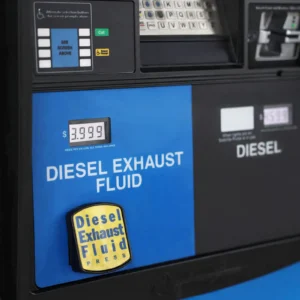Chances are, just about everyone who works in the offices of a trucking company (or any office, for that matter) followed a similar process to get the job. The usual process is to fill out an application, submit a resume and then be brought in for at least one face-to-face interview. During that interview, the prospective employer asks questions about the applicant’s work history, education and other subjects related to how he or she might perform the job if hired. Usually the applicant is allowed to ask questions, too.
For most professional truck drivers, however, the hiring process works quite differently. Resumes are rarely submitted by drivers or considered by recruiters. The initial “interview” is often a brief phone conversation, or an exchange of emails or text messages, with a recruiter representing the carrier. The driver is asked to complete an application, provide relevant information and consent to background checks. If everything looks good, the driver is extended an invitation to orientation, where more information is exchanged.
For office positions, employers are most often seeking the best candidate for the job. For driving positions, employers often want to hire as many qualified drivers as they can. It’s not a matter of who’s “best” when “good enough” will do.
Despite the differences in the process, potential employees want to look their best to prospective employers. When it comes to drivers, it’s all about the record.
First of all, sooner or later, every driver completes and signs an employment application. Some carriers tout “mini-apps” or claim they take “oral-apps”; these are simply ways to speed up the process. Once in orientation, every driver completes a written application. These days, it may be in digital format and partially completed using information previously submitted, but it’s an application just the same.
The reason is that Department of Transportation (DOT) regulations require the application to be in the drivers file, along with the driver’s consent for background checks, drug and alcohol screenings, and more.
Applicants can speed up the process — and make a better impression — by having the information needed to complete the application, including a complete work history. Regulations require a carrier to have a list of all DOT-regulated jobs a driver has held in the past 10 years. For drivers who change jobs often, that could be a long list.
Many applicants either don’t list all their employers or don’t provide complete information about previous jobs. This practice results in a delay in the hiring process while carrier representatives try to find the needed information. (Note: If you omit former employers, it can look like you’re trying to hide something. Busy recruiting departments may choose to move on to other candidates.)
The best practice is to keep a list of former employers, complete with addresses and phone numbers. This list can be stored on your phone as a spreadsheet or PDF file. A less tech-savvy but effective method is to take a quick photo of the work history page(s) of your application, and keep that on your phone. The important thing is to keep the info where you can find it when needed.
The government requires background checks to be completed for drivers, and carriers use several sources to conduct these. You should know what each report says about your record before the carrier sees it. Many sources for this information are consumer reporting agencies and fall under fair reporting rules, meaning you legally have access to your information.
One of the first checks that will be made is with your state’s department of motor vehicles (DMV). It looks bad to claim you have no traffic violations on your application if your DMV reports that you do. State agencies do make errors, but problems can arise when you assume an old ticket is no longer on your record, or that a violation in another state wasn’t reported to your home state. Know what’s in your report. Order one from your DMV before you apply for the next job.
Next is the Federal Motor Carrier Safety Administration’s (FMCSA) Drug and Alcohol Clearinghouse. You’ll need to register at the Clearinghouse website and give consent for the carrier to check; you won’t be hired if you don’t consent. Go to clearinghouse.fmcsa.dot.gov and click on the “register” button. At this time, you’ll also be able to see what’s in your record. Your record contains any positive drug or alcohol test results in the past three years, as well as whether you’ve completed any return-to-work programs after a positive test.
Another report carriers use is the FMCSA Pre-Employment Screening Program (PSP) report, which shows your experiences at roadside inspections and other events as reported by law enforcement. Drivers are often surprised at the negative information these reports contain. For example, if the officer records that you were stopped for speeding, that shows up on the PSP — even if you didn’t get a ticket, got a warning or beat the charge in court. Other violations, such as improper lane use or following too closely, can quickly derail your application. Carriers can and do use this information to deny hire. Check your PSP annually at psp.fmcsa.dot.gov/psp/public. If there are discrepancies, there’s a process to request your record be corrected.
Carriers can check your employment history by contacting former employers and by requesting an employment history report from one of the agencies that provide them. The most popular of these is the DAC Employment History Report from HireRight, commonly known as the “DAC Report.” Carriers will check to make sure the employment dates on your application match the report, whether the carrier reported your performance as “satisfactory,” and for any comments the carrier placed in your file. Comments often specify driver actions such as truck abandonment, misuse of company funds, excessive safety violations and more.
You can get a free copy of your report at hireright.com or by calling 866-521-6995. If you disagree with anything listed in the report, you have the right to request that it be corrected. If the carrier refuses, you have the right to have your rebuttal statement included on the report.
In short, you’ll avoid unwelcome surprises and get hired more quickly if your background reports, application and your comments all match up.
Cliff Abbott is an experienced commercial vehicle driver and owner-operator who still holds a CDL in his home state of Alabama. In nearly 40 years in trucking, he’s been an instructor and trainer and has managed safety and recruiting operations for several carriers. Having never lost his love of the road, Cliff has written a book and hundreds of songs and has been writing for The Trucker for more than a decade.














